- Administrator
- Albums and Singles
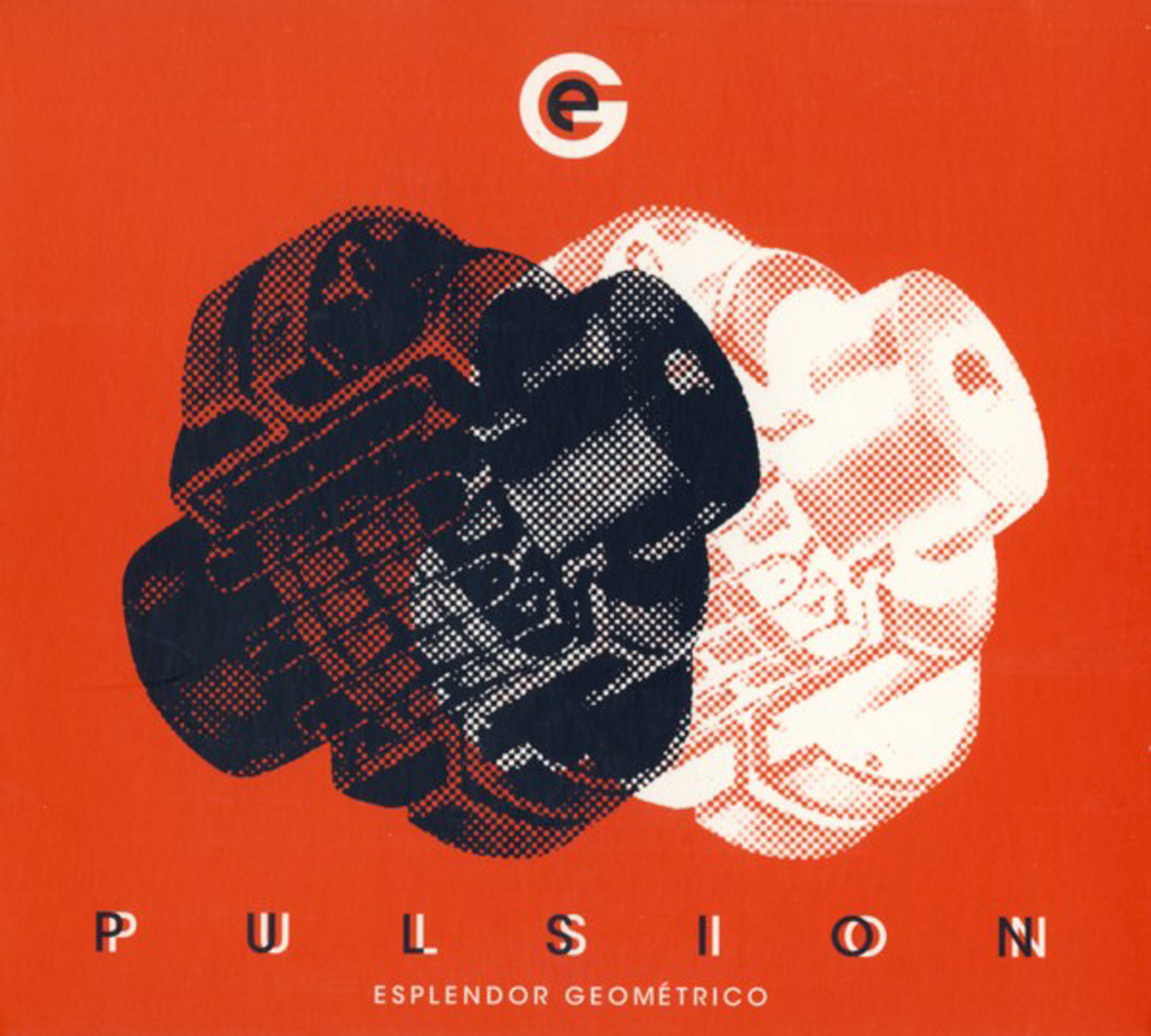 Recently, I have been delving deeper and deeper into Esplendor Geométrico's discography and it has become increasingly clear to me that their prime never actually ended.  Arturo Lanz and his varying bandmates have certainly released some comparatively uneven or tame efforts over the course of their three-decade career, but Lanz has never stopped being a rhythmic genius and can still unleash a crushing masterpiece at any time.  One such gem, "Aplicación Insospechada," comes at the end of this intermittently impressive (and woefully underappreciated) 2009 effort.
Recently, I have been delving deeper and deeper into Esplendor Geométrico's discography and it has become increasingly clear to me that their prime never actually ended.  Arturo Lanz and his varying bandmates have certainly released some comparatively uneven or tame efforts over the course of their three-decade career, but Lanz has never stopped being a rhythmic genius and can still unleash a crushing masterpiece at any time.  One such gem, "Aplicación Insospechada," comes at the end of this intermittently impressive (and woefully underappreciated) 2009 effort.
While there are some Esplendor Geométrico albums that have a clear, distinctive character that sets them apart from the rest of the Spanish industrialists' oeuvre, Pulsión is not one of them.  That is neither a good nor a bad thing, but it certainly makes it challenging to articulate what makes it special.  With few exceptions, nearly every EG album is essentially a collection of incredibly dense, bludgeoning grooves coupled with snatches of dialogue or non-musical chaos.
For this particular effort, those snippets of found audio tend to be extreme right- or left-wing political speeches spanning several different cultures, but they were all chosen for their sound rather than their content.  Deeper meaning (along with melody and nuance) is simply beside the point for Lanz and Saverio Evangelista: those are things that humans care about–EG's aim to be as immensely and hypnotically inhuman as possible.  When they succeed at that, they succeed spectacularly.  Case in point: the aforementioned "Aplicación Insospechada" sounds like a giant factory suddenly became sentient and synchronized itself into a crunching, mechanized, and absolutely earth-shaking groove.
Of course, while the massive, machine-like beat is certainly the most important part of the EG aesthetic, it is not the only part.  Pulsión's finest moments occur when there is a strong synergy between the percussive elements and the more "musical" elements.  "Aplicación Insospechada" absolutely nails it on that count, as its insistent car-compactor crunch is nicely balanced by creepily lilting loop that sounds like chanting children.  Evangelista and Lanz hit upon another perfect combination with the aberrant "Ondas Transparentes," which combines an oddly croaking and distortion-free Latin rhythm with a weirdly shifting and hallucinatory loop of more chanting.
None of the other songs on the album quite hit those same heights, but a few other pieces manage to succeed purely on sheer power and obsessive repetition, most notably "Japo," which boasts an unstoppably heavy beat beneath a recording of a very impassioned Japanese dissident.  "Michi Michi" also works quite well, simply because it throws all attempts at musicality out the window in favor of an absolutely bludgeoning thump buffeted by washes of white noise.
As for the remainder, they are basically business-as-usual for Arturo and Saverio, which is generally a good thing, except for one caveat: while nobody crafts beats as dense, visceral, and mesmerizing as Esplendor Geométrico, their mid-level material definitely starts to yield diminishing returns after while.  That situation seems unavoidable, as Lanz truly lives or dies with his rhythms.  Every song is essentially a frill-free vamp with no real development or anything else to grasp onto–either a groove hits the mark and floors me or it does not (and grows stale very quickly).  That said, this is a very strong effort amidst a remarkably solid catalog and I am not sure any EG album could be much better.  Consequently, this is probably as good an entry to a rather singular and crucial band as any for a newcomer.  Those already familiar with Lanz's work will not want to miss either "Ondas Transparantes" or "Aplicación Insospechada," as they are easily as canonical as anything recorded during the band's '80s/early '90s heyday.
 
Read More
- Administrator
- Albums and Singles
![]() Between the final Throbbing Gristle albums and last year's stellar Carter Tutti Void collaboration, Chris and Cosey have been maintaining an atypically high profile as of late, which makes it easy to forget that there has not been a new Carter Tutti album in over five years.  While that situation is not expected to be remedied until sometime in 2014, this very solid 10" single makes for a very welcome teaser in the meantime.
Between the final Throbbing Gristle albums and last year's stellar Carter Tutti Void collaboration, Chris and Cosey have been maintaining an atypically high profile as of late, which makes it easy to forget that there has not been a new Carter Tutti album in over five years.  While that situation is not expected to be remedied until sometime in 2014, this very solid 10" single makes for a very welcome teaser in the meantime.
This release takes its unusual title from the manufacturer of a metal lampshade that Delia Derbyshire famously "played" in some of her BBC Radiophonic Workshop work in the '60s.  Now that lampshade has made its triumphant return, as Chris and Cosey managed to track down one of their own after seeing Delia's in a museum exhibit a while back. As far as lampshades go, this one proved to be remarkably versatile as an instrument.  In fact, I never would have guessed it was involved if I had not read about it, as "Coolicon" basically sounds like the middle ground between Carter Tutti and Carter Tutti Void: a trance-y, propulsive quasi-industrial groove with an understated hook augmented mingled with some noisier atmospherics.  It is certainly poppier and more sensual than anything on the Carter Tutti Void album (even though Cosey does not sing at all), but Cosey's lampshade-bowing occasionally provides some ugly and Gristle-worthy metallic grind.
The B-side ("Coolicon-Fusion") is essentially the same piece, yet transformed into something nearly unrecognizable.  It is not so much a dub version as it is a skeletal, slow-motion, ghostly caricature, as all the textures are different and it feels like all of the life and soul has been drained from the piece.  As a consequence, it is inherently less vibrant and instantly gratifying than its previous incarnation, but it is still quite likable in its own throbbing, vaguely menacing way.  At times it even weirdly reminds me of 23 Skidoo or Zoviet France, as the crescendo features some forlorn horn-like sounds and percussive noises that could reasonably described as "sci-fi tribal."
Of course, being a mere single, Coolicon is exasperatingly brief, but it is still an impressively strong, worthy effort.  It is also a fairly ingenious one, as the transformation that the piece undergoes for the nightmarish B-side is truly radical.  Carter and Tutti were presumably quite pleased with the two pieces as well, as this is the first time that they have been inspired to release a single in over 20 years.  I still think it seems like a bit of an odd choice for the duo to release a single with no vocals, but that does not make this release any less enjoyable: Coolicon does a fine job of continuing (and building upon) the momentum from last year's Nik Void collaboration and reaffirms my belief that the duo is probably in the midst of their third of fourth Golden Age.  Also, if anyone has released a better lampshade-inspired song this year, I sure as hell have not heard it yet.
 
Read More
- Administrator
- Albums and Singles
To celebrate the 10-year anniversary of the Dekorder label, we have invited some of our dearest friends and artists we admire to contribute new & exclusive recordings to a brand new series of highly limited Hybrid-Vinyl Picture-Discs. So far we have confirmations from Pye Corner Audio, Leyland Kirby, Excepter, sonic boom (of Spacemen 3, Spectrum, E.A.R.), Bill Kouligas (of PAN Records), Vindicatrix, Kemiallysät Ystävät, Ensemble Economique, Alien Radio, Black To Comm and a few lovely surprises to be revealed in the 2nd half of the year. Hybrid-Vinyl is a newly devised combination of a Picture-Disc and a regular vinyl release. The audio will be cut into the black vinyl side to utilize the superior audio quality of classic vinyl (compared to the often weaker-sounding picture disc pressings).
We are planning to do runs of 300 to 500 copies depending on the popularity of the respective artists. There will be no re-press. Ever. The releases will be pressed on 12" Hybrid-Vinyl and contain 15 - 25 minutes of exclusive music.
More information is available here.
Read More
- Administrator
- Albums and Singles
•The first critical history of industrial music as a genre
•Draws on interviews with both famous and forgotten musicians, record label owners, DJs, and promoters
•Offers close readings of twenty exemplary works spanning thirty years
"Industrial" is a descriptor that fans and critics have applied to a remarkable variety of music: the oildrum pounding of Einstürzende Neubauten, the processed electronic groans of Throbbing Gristle, the drumloop clatter of Skinny Puppy, and the synthpop songcraft of VNV Nation, to name just a few. But the stylistic breadth and subcultural longevity of industrial music suggests that the common ground here might not be any one particular sound, but instead a network of ideologies. This book traces industrial music's attitudes and practices from their earliest articulations--a hundred years ago--through the genre's mid-1970s formation and its development up to the present and beyond.
Taking cues from radical intellectuals like Antonin Artaud, William S. Burroughs, and Guy Debord, industrial musicians sought to dismantle deep cultural assumptions so thoroughly normalized by media, government, and religion as to seem invisible. More extreme than punk, industrial music revolted against the very ideas of order and reason: it sought to strip away the brainwashing that was identity itself. It aspired to provoke, bewilder, and roar with independence. Of course, whether this revolution succeeded is another question...
Assimilate is the first serious study published on industrial music. Through incisive discussions of musicians, audiences, marketers, cities, and songs, this book traces industrial values, methods, and goals across forty years of technological, political, and artistic change. A scholarly musicologist and a longtime industrial musician, S. Alexander Reed provides deep insight not only into the genre's history but also into its ambiguous relationship with symbols of totalitarianism and evil. Voicing frank criticism and affection alike, this book reveals the challenging and sometimes inspiring ways that industrial music both responds to and shapes the world.
Assimilate is essential reading for anyone who has ever imagined limitless freedom, danced alone in the dark, or longed for more noise.
More information is available here.
Read More
- Administrator
- Albums and Singles

Noise, an underground music made through an amalgam of feedback, distortion, and electronic effects, first emerged as a genre in the 1980s, circulating on cassette tapes traded between fans in Japan, Europe, and North America. With its cultivated obscurity, ear-shattering sound, and over-the-top performances, Noise has captured the imagination of a small but passionate transnational audience.
For its scattered listeners, Noise always seems to be new and to come from somewhere else: in North America, it was called "Japanoise." But does Noise really belong to Japan? Is it even music at all? And why has Noise become such a compelling metaphor for the complexities of globalization and participatory media at the turn of the millennium?
In Japanoise, David Novak draws on more than a decade of research in Japan and the United States to trace the "cultural feedback" that generates and sustains Noise. He provides a rich ethnographic account of live performances, the circulation of recordings, and the lives and creative practices of musicians and listeners. He explores the technologies of Noise and the productive distortions of its networks. Capturing the textures of feedback—its sonic and cultural layers and vibrations—Novak describes musical circulation through sound and listening, recording and performance, international exchange, and the social interpretations of media.
"David Novak goes inside the Noise scene and presents an astounding perspective: historically astute, inspired, and completely shell-shocked."—Thurston Moore, Sonic Youth
"Edgy, compelling, and sharply insightful, this is the definitive book on 'Japanoise.' Drawing on his personal involvement in Noise scenes across two continents and over two decades, David Novak takes readers into the experience of Noise: its production and performance through apparati of wires, pedals, amplifiers, and tape loops, through its intensity on the stage and in one's ears and body."—Anne Allison, author of Precarious Japan
"This is a striking book: theoretically exciting, aesthetically intriguing, and well crafted. Japanoise is an extreme case study of modern musical subjectivity that demonstrates how core cultural ideas are formed on the fringe. David Novak's treatment of circulation as embedded in the creative process will shift the debate in ethnomusicology, popular music studies, and global media studies."—Louise Meintjes, author of Sound of Africa! Making Music Zulu in a South African Studio
More information is available here.
Read More
- Administrator
- Albums and Singles
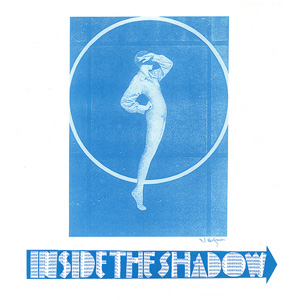 Anonymous emerged from a group of friends who played at each other’s houses in and around Indianapolis in the early ‘70s. They recorded their debut and sole album in a garage in Milwaukee in 1976, the same year that the Ramones and Blondie released their debuts. They pressed approximately 300 copies, but never played a gig, never promoted the album, and released only one follow-up, albeit under a different name and with a different lineup. That one record is remarkable though, a private press gem with excellent musicianship, beautiful vocal harmonies, and imaginative songwriting from their front man, Ron Matelic.
Anonymous emerged from a group of friends who played at each other’s houses in and around Indianapolis in the early ‘70s. They recorded their debut and sole album in a garage in Milwaukee in 1976, the same year that the Ramones and Blondie released their debuts. They pressed approximately 300 copies, but never played a gig, never promoted the album, and released only one follow-up, albeit under a different name and with a different lineup. That one record is remarkable though, a private press gem with excellent musicianship, beautiful vocal harmonies, and imaginative songwriting from their front man, Ron Matelic.
Inside the Shadow was recorded in just a couple of days, but it sounds like it should have taken much longer. Matelic’s songs are lithe, unpredictable things that jump from one time signature and one style to another seamlessly. He juxtaposes colorful choruses with tricky rhythmic patterns and contrasts lilting vocal harmonies with hard edged guitar solos, hiding the seams as he goes. The band’s performances match Matelic’s nimble writing with energy and precision, sounding equally at ease whether they’re drawing out a slow, bluesy chorus or riding on the wave of an electric 12-string’s melody.
As it turns out, Shadow’s eight songs were written over a period of several years; starting perhaps as early as 1972, when Matelic befriended bassist Glenn Weaver. Vocalist Marsha Rollings and drummer John Medvescek were old friends who shared a mutual love for Buffalo Springfield, the Beatles, and groups like Hot Tuna and Jefferson Airplane, so there was a rapport between them all before they ever rehearsed a song or stepped into the studio.
Their long friendship translated into magic on record. Marsha and Ron’s harmonizing and singing are two obvious highlights, but Medvescek and Weaver make for an impressive rhythm combo. They rarely just keep time, and Ron’s songs give them plenty of room to show off their virtuosity. When Matelic takes off on longer solos or rips into his 12-string, they drive the music forward, accenting it with snappy about faces, big crescendos, and sudden left turns. On the slower songs, they anchor Ron and Marsha's lighter moments with heavier material, whether that means hitting the skins harder or laying down an extra layer of melody on the thicker strings.
Stylistically Anonymous may wear their influences on their sleeves—Matelic admits to borrowing ideas and melodies from The Byrds and the Mamas and the Papas—but the band integrates everything they borrow so completely that I can’t boil the record down to a particular style or a single source. Inside the Shadow sounds of its time, is maybe even a little anachronistic, but it isn't just another psychedelic record or rock ‘n’ roll curiosity.
So maybe Anonymous weren’t following the trends of ’76 when they recorded Inside the Shadow, but they weren’t living in the past either.
samples:
- I only have the LP, so no samples. You can listen to "Pick Up and Run" on Youtube though.
 
Read More
- Administrator
- Albums and Singles
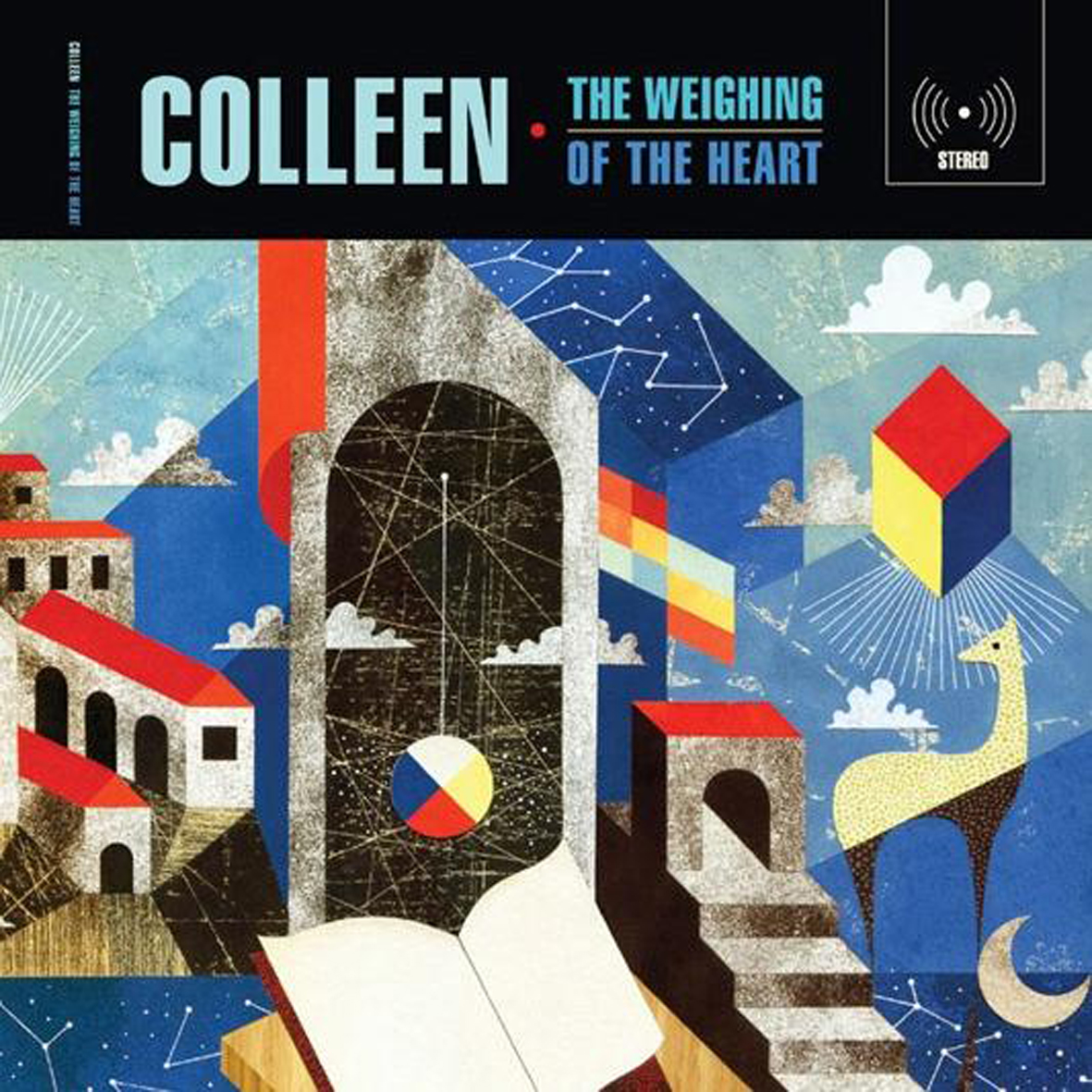 Cécile Schott released a truly impressive string of beautiful, distinctive albums in the early and mid '00s, but went mysteriously silent after 2007's Les Ondes Silencieuses (much to my chagrin).  Now she is thankfully back and seems creatively re-invigorated, yet noticeably transformed: her latest effort is every bit as good as her previous work, but takes her aesthetic in a much more pristine, stripped-down, and song-like direction than I expected.
Cécile Schott released a truly impressive string of beautiful, distinctive albums in the early and mid '00s, but went mysteriously silent after 2007's Les Ondes Silencieuses (much to my chagrin).  Now she is thankfully back and seems creatively re-invigorated, yet noticeably transformed: her latest effort is every bit as good as her previous work, but takes her aesthetic in a much more pristine, stripped-down, and song-like direction than I expected.
The Weighing of the Heart opens with a minor bombshell, as "Push the Boat Onto the Sand" marks the first time that Cécile has sung on one of her albums.  Normally, that would be a major bombshell ten years into a career, but her vocals sound so natural and appropriate that it actually took a few cycles through the album before I realized their significance.  Rather, it felt like she had been recording her whole career with a microphone in front of her and just finally got to some songs where singing seemed appropriate.  Weirdly, it seemed far more significant to me that these 11 songs felt uncharacteristically clear, simple, and intimate.  In the past, Colleen albums have sounded like neo-classical laptop collage; malfunctioning, electronically treated music boxes; or a small ensemble of chamber musicians, but until now she has never sounded like one person performing alone in a room.  That, much more than the presence of her voice, makes this album feel like Cécile's most bold and personal effort to date.
That does not necessarily mean that it is her best (her largely sample-based debut album is intermittently something of a masterpiece), but it is pleasantly striking to see another side of a consistently wonderful artist.  In other respects, however, The Weighing of the Heart stays true to the rather fluid "Colleen aesthetic" of dreamlike neo-classicism, which is no simple feat given the lack of effects and processing involved.  Rather, the otherwordliness in this case is achieved organically through cryptic lyrics about constellations, references to The Book of the Dead, looping repetition of phrases, erratic song lengths, and unconventional structures.  Of course, all of that only works because the underlying music is so beautiful, assured, and unusual: Cécile is something of a virtuosic multi-instrumentalist, building these pieces primarily from a uniquely tuned treble viola da gamba and some Moondog-inspired percussion mingled with classical guitar, clarinet, gamelan, piano, organ, and bells.
Nearly every song on the album is strange and memorable in some way, but the strongest is probably the propulsive and sensual "Going Forth By Day," which marries Spanish-sounding guitar (or viola da gamba) with bittersweet clarinet and some very spirited maraca.  Another strong candidate is the chameleonic "Ursa Major Find," in which multi-tracked, skipping vocals and bird-like string-squealing gradually give way to a lush, almost hymn-like choral interlude followed by a twinkling cascade of plucked strings and piano.  I was also struck by much Schott's songs vary texturally, dynamically, and rhythmically from one another this time around, as she seems to be able to effortlessly change gears between locked-groove-sounding a cappella ("Break Away"); gnarled string-bowing (the title piece); intricate plucked arpeggios; unusual, off-beat percussion; and sounding like a church organist without ever making a misstep or breaking the album's mood.
For me, an album like The Weighing of the Heart represents quite a rare treat, as it is not at all common for an artist to return from a long hiatus at full-strength with a bold new experimental streak.  The sole critique I can muster is that there is nothing here that left me as awestruck as some of Schott's more complex previous work ("Everyone Alive Wants Answers" was an instant candidate for my new favorite song when it came out).  Also, several of the shorter pieces on the album feel like interludes rather than fully realized compositions.  However, the trade-off is that Cecile's new work has an edge, intimacy, and immediacy that was not there before and the various "interludes" cohere into a very satisfying and enticingly mysterious whole.  I would not change that.  Also, those other albums are always there for me to listen to, so I would much rather hear Cécile plunge forward rather than repeat herself, which is exactly what she accomplished (wonderfully).  This was a very pleasant surprise in all respects.
 
Read More
- Administrator
- Albums and Singles
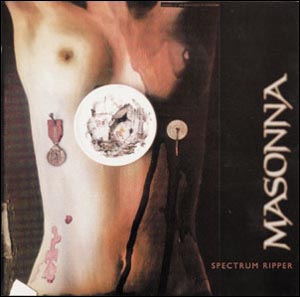
Artist: Masonna
Title: Spectrum Ripper
Catalogue No: CSR17LP
Barcode: 5060174955402
Format: LP & CD
Genre: Japanese Noise
Shipping: 22nd July
Limited vinyl reissue of one of our all-time favourite noise albums! The extreme collage sounds and insane vocals of Maso Yamazaki, one of the world's leading noise musicians. Brutal frequencies and rabid screaming vocals mix to create the finest album Masonna has ever produced. Divided into 25 tracks, this is considered by some as the last word in noise recordings! Ltd x 300 copies on brown vinyl in a full colour sleeve. Comes with the remastered CD version in a card sleeve.
Tracks: Part I - Part XXV
Read More
- Administrator
- Albums and Singles
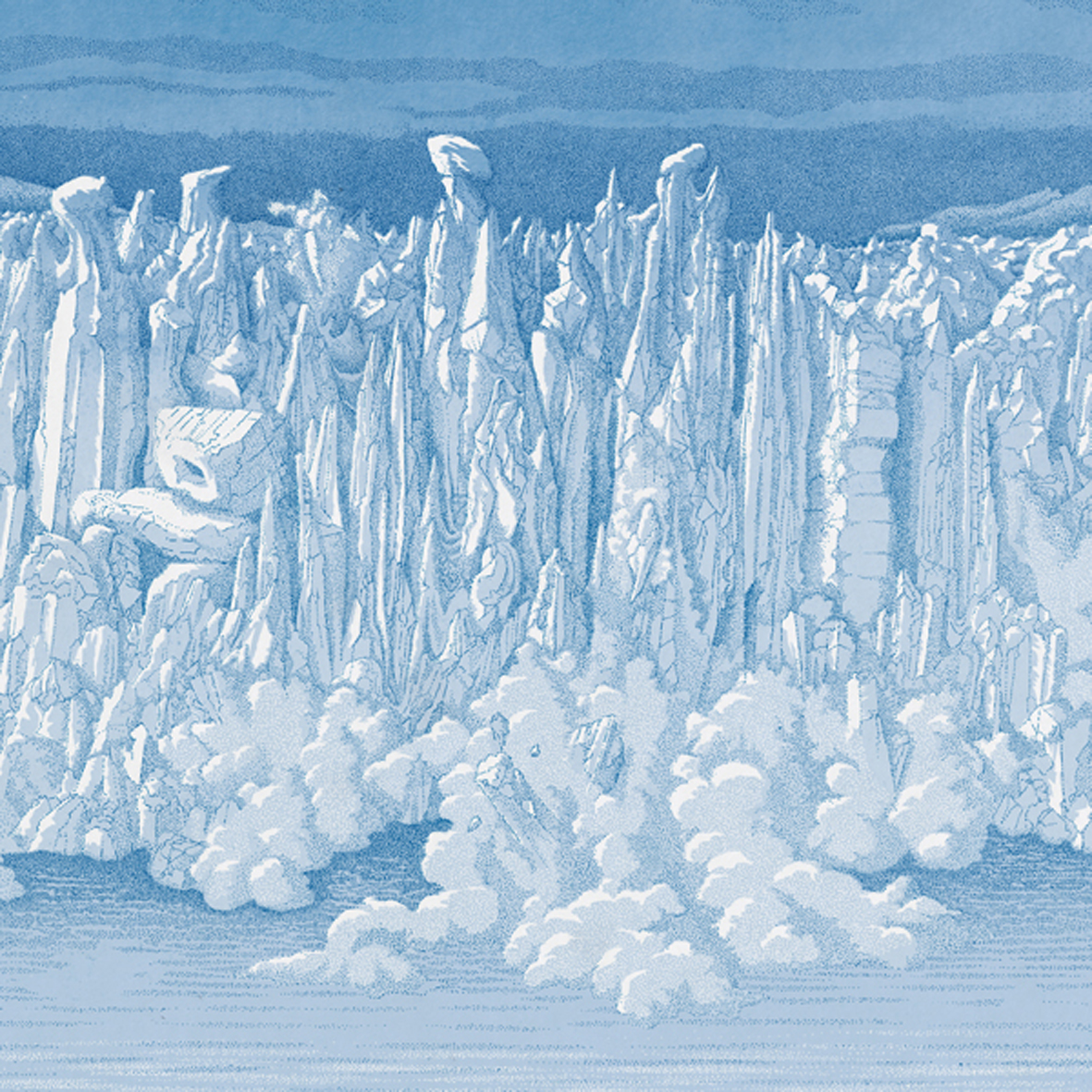 This was my first exposure to the work of video artist/composer JR Robinson and it more or less left me absolutely flattened.  You've Always Meant So Much To Me is ostensibly just a single drone piece Robinson wrote to soundtrack one of his films, but a far better description is probably "a veritable Murderers' Row of Chicago's finest black metal and noise musicians converged at Steve Albini's studio to perform a truly crushing, slow-burning, and blackened epic."  More remarkable still: the album is even better than that sounds.
This was my first exposure to the work of video artist/composer JR Robinson and it more or less left me absolutely flattened.  You've Always Meant So Much To Me is ostensibly just a single drone piece Robinson wrote to soundtrack one of his films, but a far better description is probably "a veritable Murderers' Row of Chicago's finest black metal and noise musicians converged at Steve Albini's studio to perform a truly crushing, slow-burning, and blackened epic."  More remarkable still: the album is even better than that sounds.
Given the brutal lineage of many of the performers involved (Leviathan, Nachtmystium, Bloodyminded, etc.), it came as a great surprise to me that You've Always Meant So Much To Me starts off sounding a lot like something off of Windy & Carl's We Will Always Be and stays that way for a deliciously long time.  That comparison is a very high compliment coming from me, but it is definitely warranted by the subtly swaying drones, simmering guitar noise, soft female vocals, exhale-like hissing, and warm beauty that unfolds.  In fact, there is no hint of menace to be found at all until around the 12-minute mark, when a high-pitched, quavering whine swells in and harmonizes dissonantly with the underlying drones.  Some crackling inhuman howls appear as well, alleviating any doubts I may have had about whether or not the piece was about to take a very ugly turn.
As jarring as that intrusion sounds, the piece still somehow stays relatively melodic, as the nerve-rattling thrum is perversely soon joined by a looping acoustic guitar arpeggio.  The tension never lets up though, which is why You've Always Meant So Much to Me actually transcends the incredible promise of its opening.  From that point onward, it grows steadily more dense and complicated in two separate directions at once: the melodic bed is lushly augmented with viola, cello, and harmonium while the undercurrent of dread expands in both texture and heft to create a roiling, overwhelming juggernaut of equal parts beauty and nightmare.  Then it all erupts around the 22-minute mark and all of the very patient black metal guys finally get to unleash their howling catharsis.
As explosive and well-earned as the crescendo is, it marks the point where the composition downgrades from "pure genius" to merely "great."  Admittedly, black metal is not my favorite thing, but my critique is somewhat objective in that the howling vocals and distorted power chord riffing are very contemporary and fix the piece at a very specific place in time.  That does not make it any less heavy though and the band deftly avoids all of the cartoonishness and excess that I normally associate with the genre.  Also, to Robinson's credit, I have absolutely no idea what else he could have done instead, as he maintained a smoldering intensity and tension for an improbably long time and a metal eruption is unquestionably a very effective way to release all that accumulated power.  Also, I like the idea of music this brutal and black-hearted being performed in museums (this piece was debuted at Chicago's Museum of Contemporary Art, for example).
After the fury subsides, the composition winds down with a melancholy denouement/fade-out centered around harp, viola, and harmonium with a bit of Tuvan throat singing tossed in for good measure.  It does not come close to recapturing the magic of the piece's first half, but it is still a very effective come-down.  Also, that magic was probably impossible to recapture anyway, as the first 20-minutes of You've Always Meant So Much To Me are basically as good as music can possibly get.  Which is even more remarkable when I remember that this album is actually just a soundtrack to accompany one of Robinson's films, making it just one facet of a multimedia work.  Also, I had never even heard of Robinson until this album came out.  That makes some sense, since he seems to have primary traveled in high art circles as a field recordist/installation artist, but I now have a gnawing sense that I have been missing out on something important.  In any case, I definitely need to track down that film now.  This guy is a monster.
 
Read More
- Administrator
- Albums and Singles
 The first collaboration between Kazuyuki Kishino and Cristiano Lucani is a mass of mangled samples, processed field recordings, electronics, and piano that at times resembles an understated take on harsh noise, and at other times a sloppy, yet engaging mess of sounds. While an intense devotion to structure and composition might not be here, there are more than enough pleasurable noises and small, but fascinating outbursts to more than make up for that
The first collaboration between Kazuyuki Kishino and Cristiano Lucani is a mass of mangled samples, processed field recordings, electronics, and piano that at times resembles an understated take on harsh noise, and at other times a sloppy, yet engaging mess of sounds. While an intense devotion to structure and composition might not be here, there are more than enough pleasurable noises and small, but fascinating outbursts to more than make up for that
Across these five untitled pieces, the dynamic jumps and skips around hyperactively, never settling into one style or approach for too long.For instance, the first piece leads off with chirping noises and squelchy, spastic electronics propelled by an unconventional, yet distinctly rhythmic undercurrent that guides it along.It feels like the legion of noises someone like Merzbow might create, but with less abrasive components.The second half thins things out to clicks, piano improvisations, and odd alien atmospheres to close the piece in a much different way than it began.
The second segment immediately eschews subtlety and instead goes right into a dense insect swarm of harsh noise that eventually disintegrates into undulating electronics and a ring modulated rattling that is at times painful.This is all before settling into a glitch-ridden passage of disturbing ambience that conjures dark, obscured images of creatures lurking in the darkness.The third comes across even more of a collage feel with rhythmic throbs and a later emphasis on water and field recordings, complete with frogs and aquatic life that seemingly bounds from one setting to another.
The fifth piece especially has the most hyperactive qualities to it.Cut up and scattershot samples are thrown recklessly atop a bed of slowly pulsing electronics that makes for the only constant throughout the otherwise chaotic composition.The fourth segment demonstrates a bit more of a order to the entropy, however.Even amidst the stop/start stabbing electronics, a sense of organization can be heard, first directing everything towards an old school wall of harsh noise, but then stripping it away, leaving only the most sparse and delicate bits of the album to be heard.
Album does not necessarily feel like the most appropriate descriptor for Proto Planet.There does not seem to be any clear overarching sense of structure or composition notable throughout.Instead it comes across more as a series of sonic miniatures:captivating collages of processed field recordings and mutilated electronics that take multiple listens to pull apart.It is a case where cohesion is unnecessary, and instead it works best as a compilation of sounds that jerkily jump from one passage to the next, making it easy to dive in at any point and enjoy what is there.
samples:
 
Read More
- Administrator
- Albums and Singles
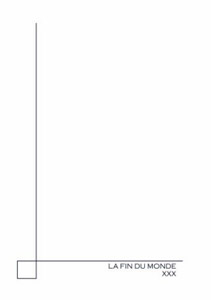 Consisting of the pair of artists that curate the Menstrual Recordings label, who have been heavy on the MB reissues, it is not at all surprising that Dedali and Disruptor’s grey, depressive electronics owe a notable debt to Bianchi’s legacy. However, their music stands entirely on its own, both in its emphasis on audio visual presentation and their approach to sound design. The lineage of this lavish CD/DVD set is clear, but the two manage to carve out their own niche as well.
Consisting of the pair of artists that curate the Menstrual Recordings label, who have been heavy on the MB reissues, it is not at all surprising that Dedali and Disruptor’s grey, depressive electronics owe a notable debt to Bianchi’s legacy. However, their music stands entirely on its own, both in its emphasis on audio visual presentation and their approach to sound design. The lineage of this lavish CD/DVD set is clear, but the two manage to carve out their own niche as well.
The music contained on the CD portion of this package is a different mix than what scores the accompanying short films, so while the two share some similar moments, each disc is it is own distinct entity.The stand alone audio disc, Neurological Possession, is a great example of a modernized take on that bleak electronic sound pioneered by the likes of Bianchi, and also Murder Corporation and Atrax Morgue, but having a more inviting, almost classically musical timbre to it.The first of the three-part title suite is all reverberated drifts and cavernous noises, with a few snippets of mantra like voices appearing throughout, emphasizing the theme of religious fervor that is the predominant theme of the work.
The second and third parts are quite different from one another, with the former consisting mostly of shifting and almost melodic passages of sound, with a DX7 synthetic bell tolling in the mist.As a whole, it is the most spacious and inviting performance here, if still somewhat sad and morose.The third part is much more of a grimy analog synth throb that channels Bianchi more directly, as it does some of Atrax Morgue’s less aggressive material.This especially makes sense, given it was constructed using the late Pierpaolo Zoppo’s (Mauthausen Orchestra) equipment.
The long closer "Internal Bleeding" takes up almost half of the disc, and uses that extended time to stretch out and float into many different directions.Made up partially of demos, sketches, and pieces of material that were recorded for a collaboration with Maurizio Bianchi, it encapsulates the sound of the album perfectly, balancing reverb heavy tones and percussive bits with some of its harsher moments.
The video accompaniment is notably more traditional in its approach, relying on lots of grainy black and white footage of nudity, graveyards, and religious iconography that are reminiscent of avant garde cinema filtered through a more cliché giallo toolkit. Other videos are expanded to images of social unrest, pornography, and medical footage, which is an obvious antecedent of works by SPK and Cabaret Voltaire some 30 years prior.It is nothing new or groundbreaking on its own, but it does fit the early 1980s industrial sensibility of the project very well, albeit not feeling quite as evolved as the music does.
Both a fitting tribute and a splendid, modernized update to the Italian industrial scene from the past, this audio visual collaboration is as much of a tribute as it is a new phase in a familiar sound.Admittedly, the audio portion is a bit more singular than the video is, but both have a distinct familiarity and nostalgia about them that makes even the occasional cliché endearing and enjoyable.Like a film that can recapture the essence of an era without always pushing it into new territories, it is engaging and tinged with just enough nostalgia to feel right.
samples:
 
Read More

